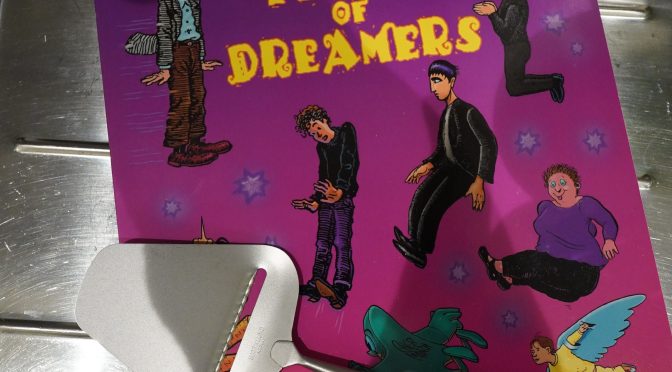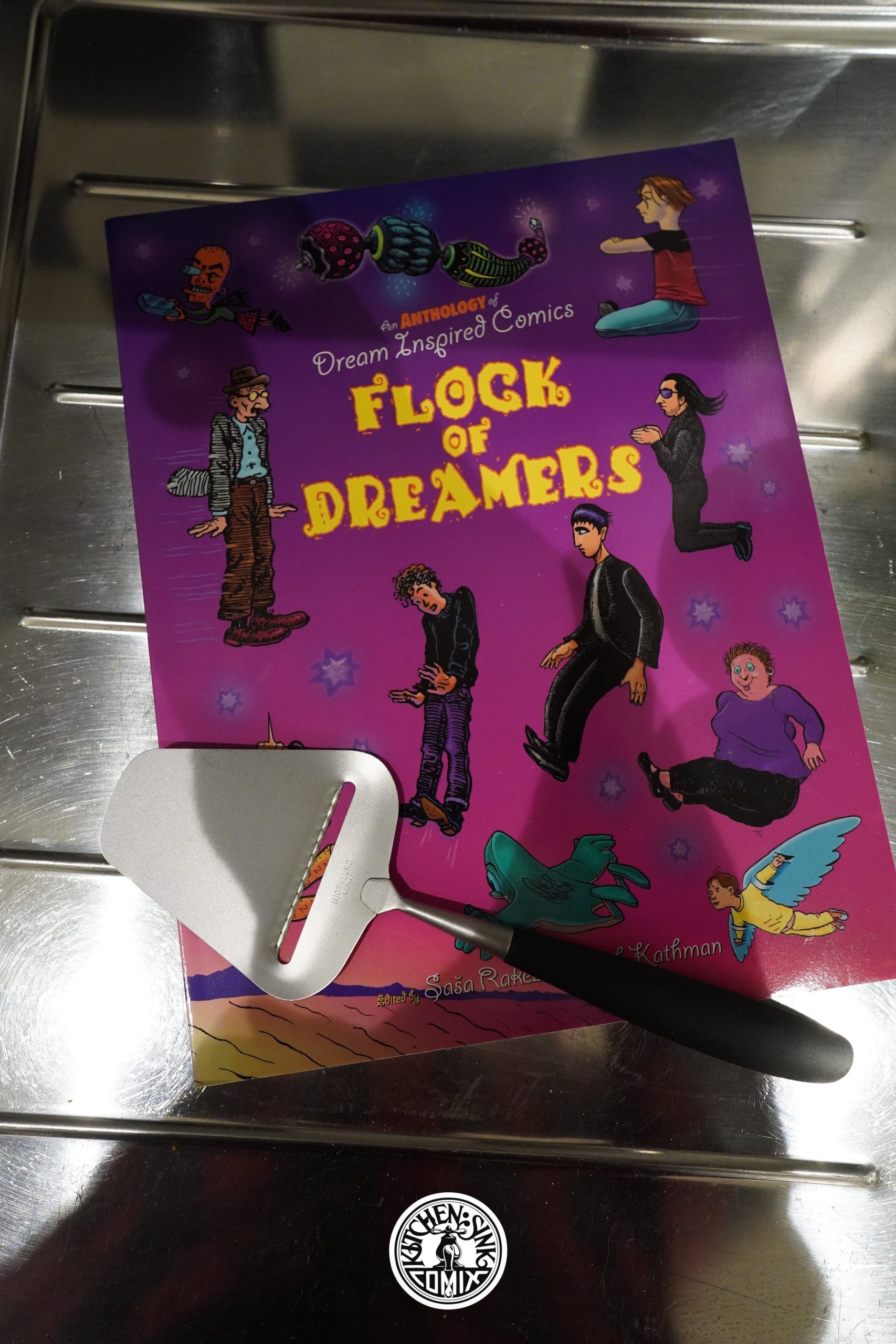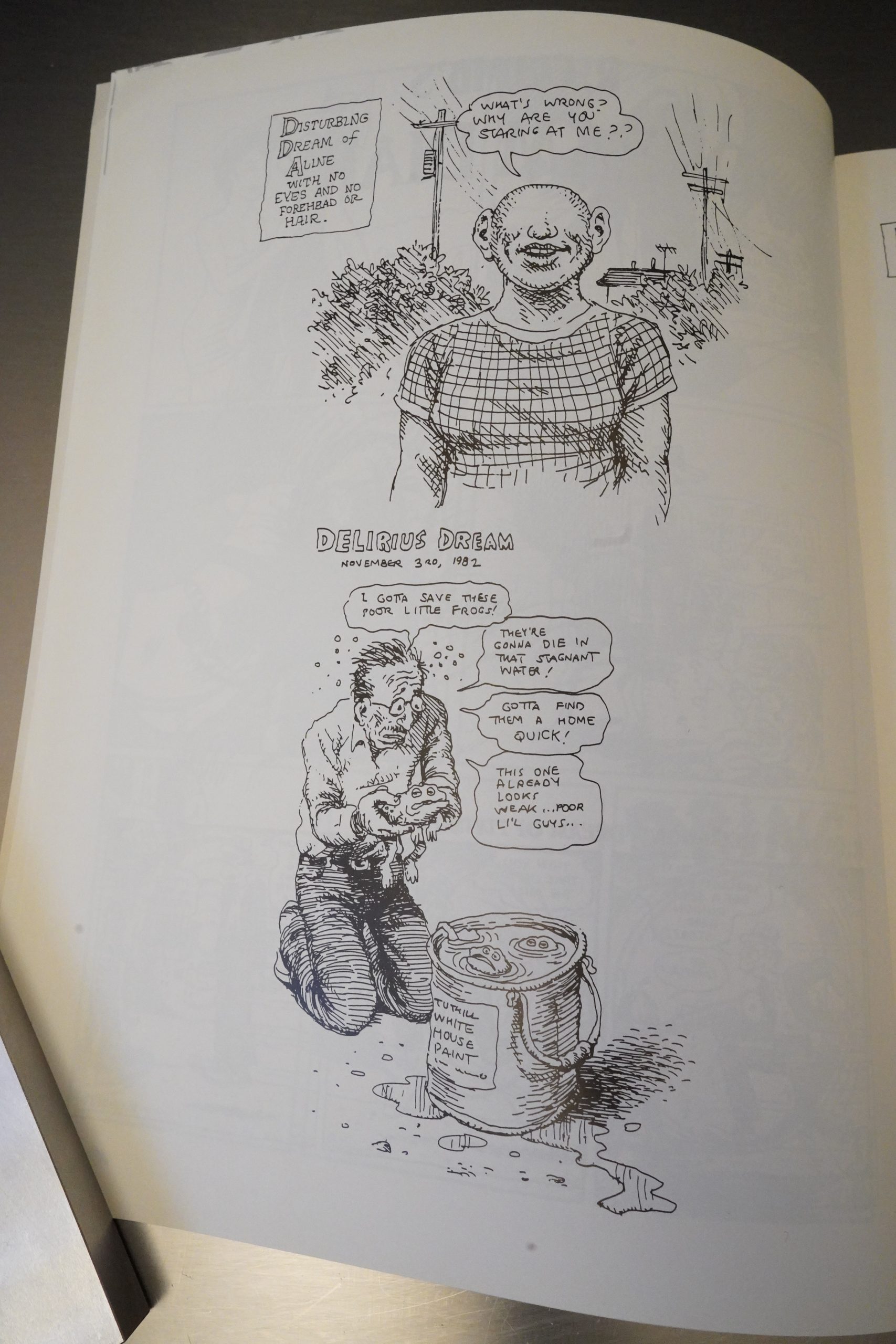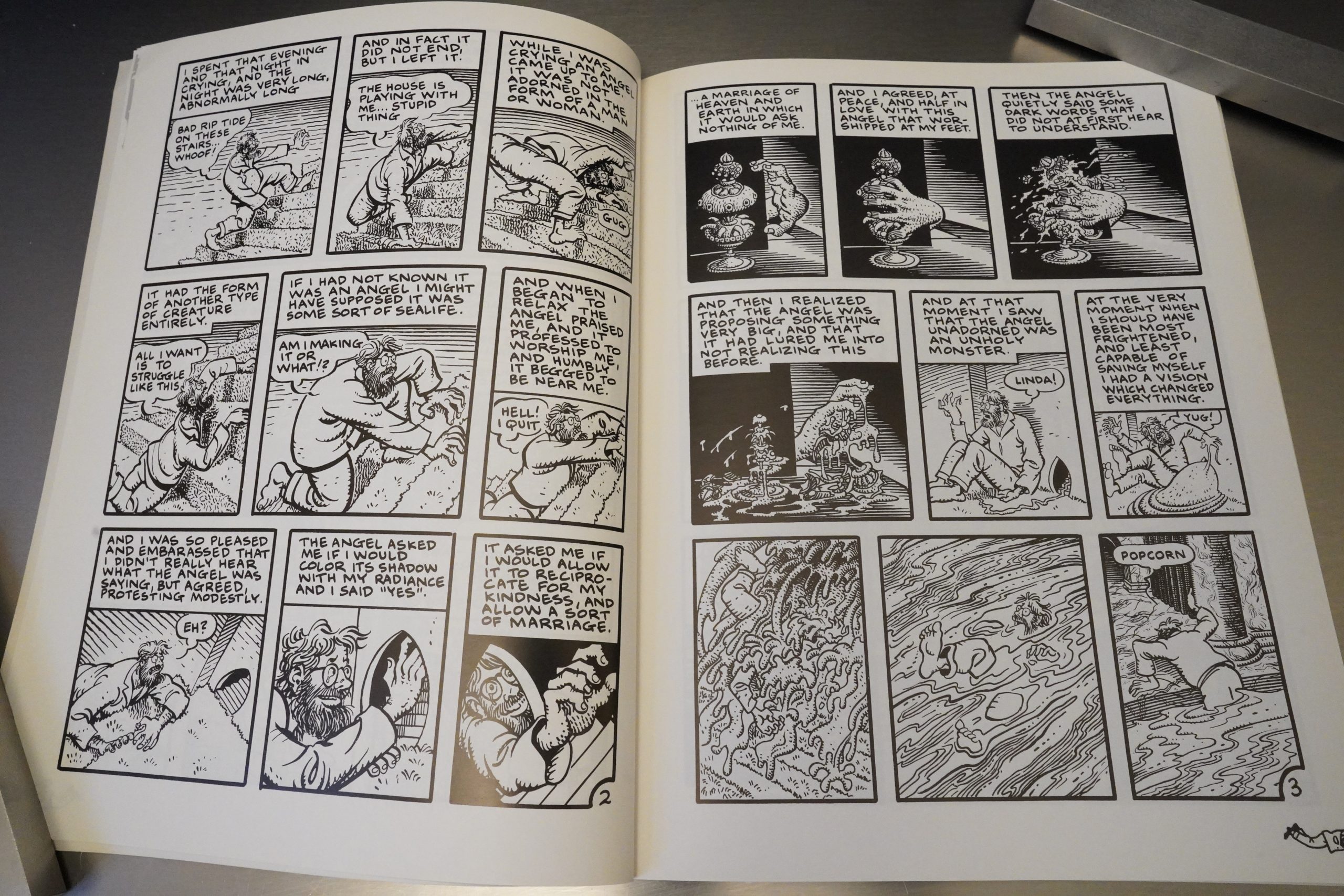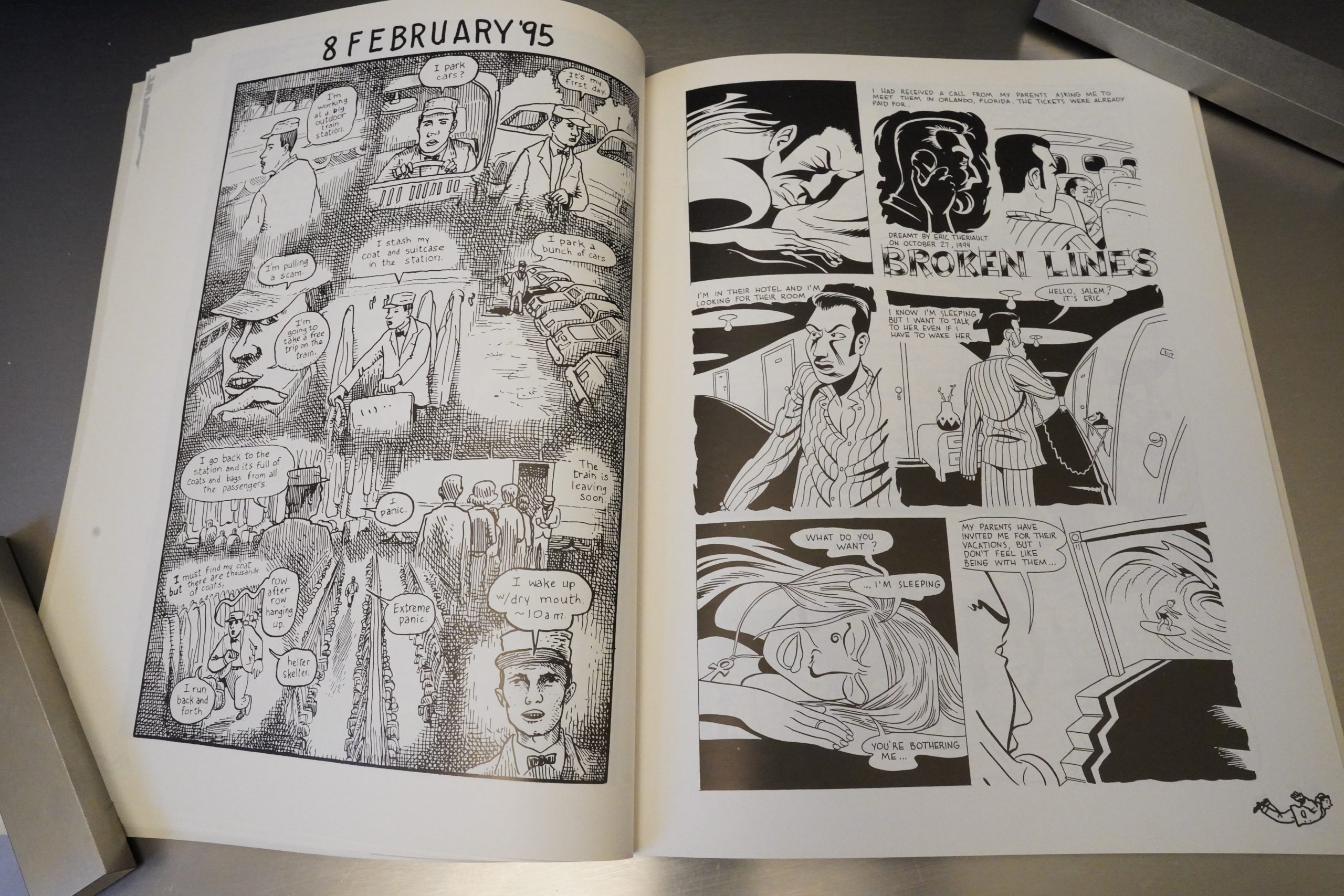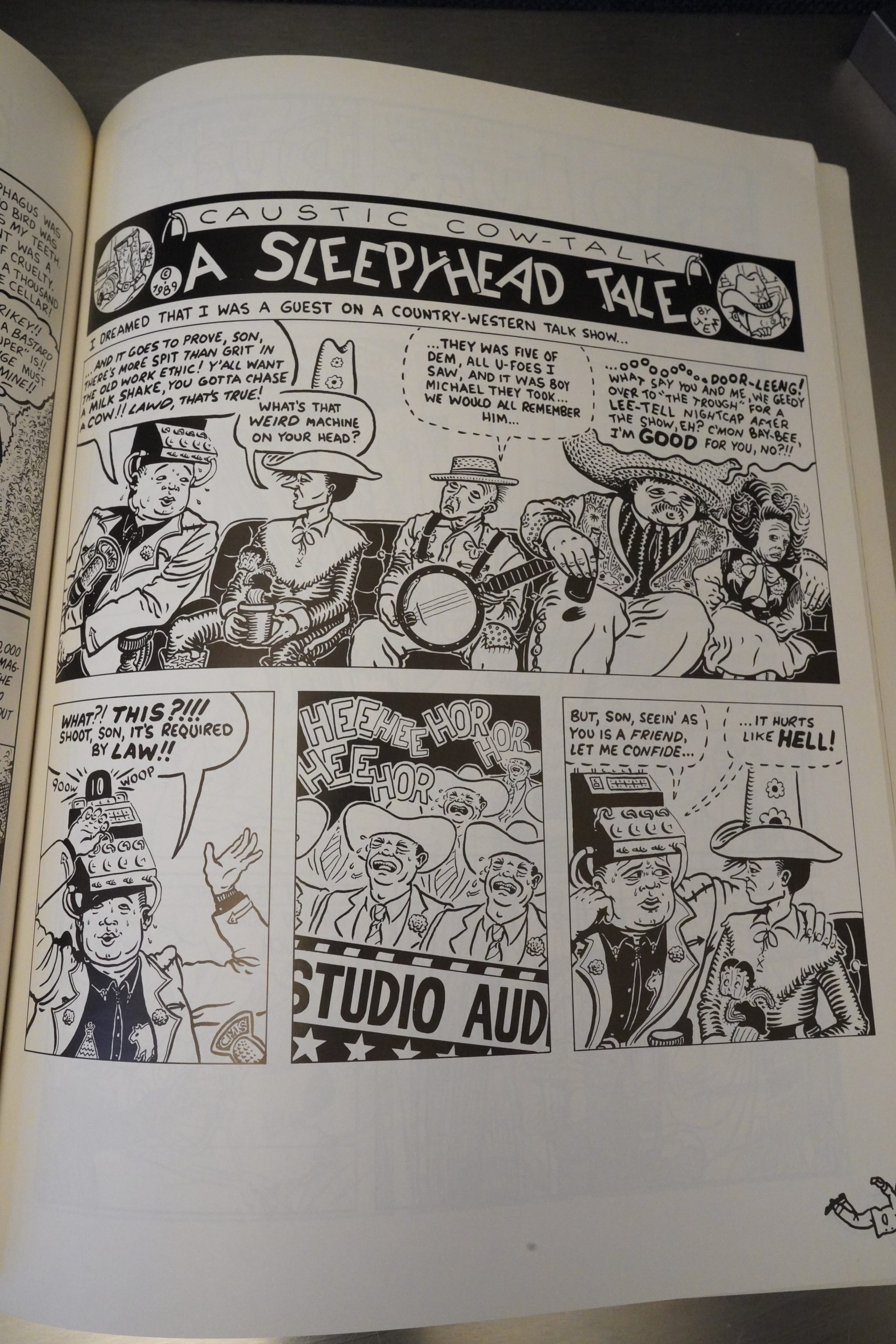Flock of Dreamers (1997) edited by Saša Rakezić and Bob Kathman
We’re now in December of 1997, and this is (as far as I can tell) the first book published by the final Kitchen Sink incarnation. (See this blog post for the gruelling details.) And the final incarnation is, in some ways, a return to the old kinder, gentler Kitchen Sink before all the corporate nonsense started.
Over the next year, Kitchen would start a new Spirit series, publish a new Will Eisner graphic novel, two Superman strip collections, a Carol Lay collection, a Steven collection, and only a smattering of Crow comics. It’s like being back in 1991 again, before the Tundra take-over turned Kitchen Sink into a Heavy Metal offshoot, and before the Ocean Group take-over turned Kitchen Sink into a Crow merchandise generating machine (and an aspirant comics-to-movie pipeline).
So I’m rather looking forward to reading this final batch of comics — many of which I’ve never read before.
My enthusiasm for dream-based comics is pretty limited. Dream comics seldom seem like dreams — mostly because dreams are impossible to retell, because what makes them so fascinating is that your Significance Filter is off, so everything you dream about has Significance; everything is deeply meaningful. But that’s just a quirk of brain physiology, so there’s really nothing significant going on. But it’s a lot of fun.
Beyond that fundamental problem is that people’s retellings of dreams seem less dreamlike than they should because they resort to doing surrealism instead, because that’s a lot easier (see above). C’mon. Flying fish?
Now we’re talking. That’s more like it. (R. Crumb.)
Jim Woodring tells us two dreams at once — one in the text, and one in the artwork, and that does indeed feel quite dreamlike.
About half the people here manage to do something eerily dreamlike. I mean, that seems like actual dreams (David Lasky to the left) and even evoke the feeling of dreaming (Eric Thériault to the right). Fantastic.
That’s very much not a lot like a dream (Jeremy Eaton).
But it’s a pretty successful book — it almost put me to sleep. Very few of the dreams have a sexual component, which is a pretty odd omission — Crumb includes some mildly sexual dreams, but perhaps it’s an editorial edict.
Acute dreamers from Baltimorph and Serbia, who are the two that you see self-drawn directly below the title on the cover, became pen-pals during the Serbian war era and realized that they both wanted to create something like this so they compiled 1-7 page chapters of single or multiple dreams from a total of 24 creators from 7 countries! I found it interesting that this was published by Kitchen Sink when 5 or 6 (Woodring?) were from Seattle- the seat of Fantagraphicsville.
This is the two hundred and seventh post in the Entire Kitchen Sink blog series.
